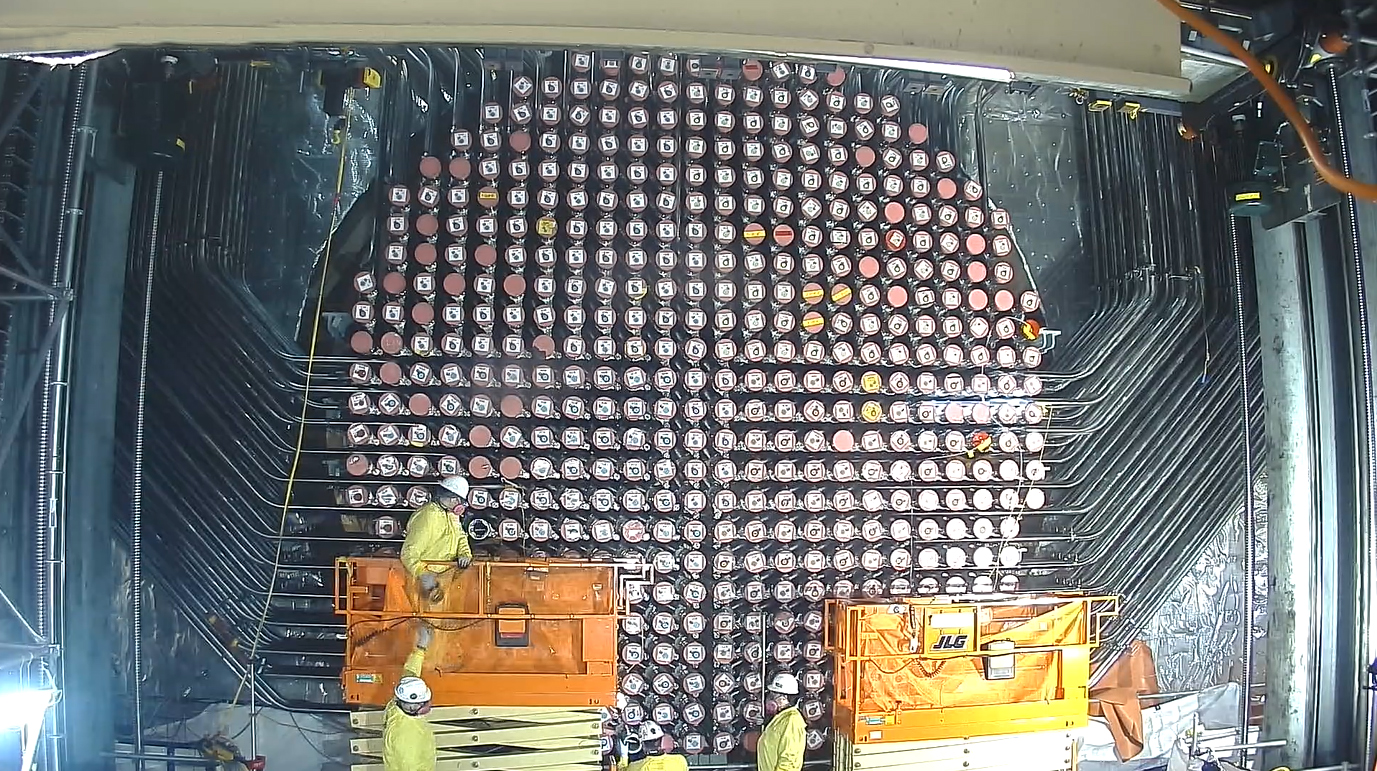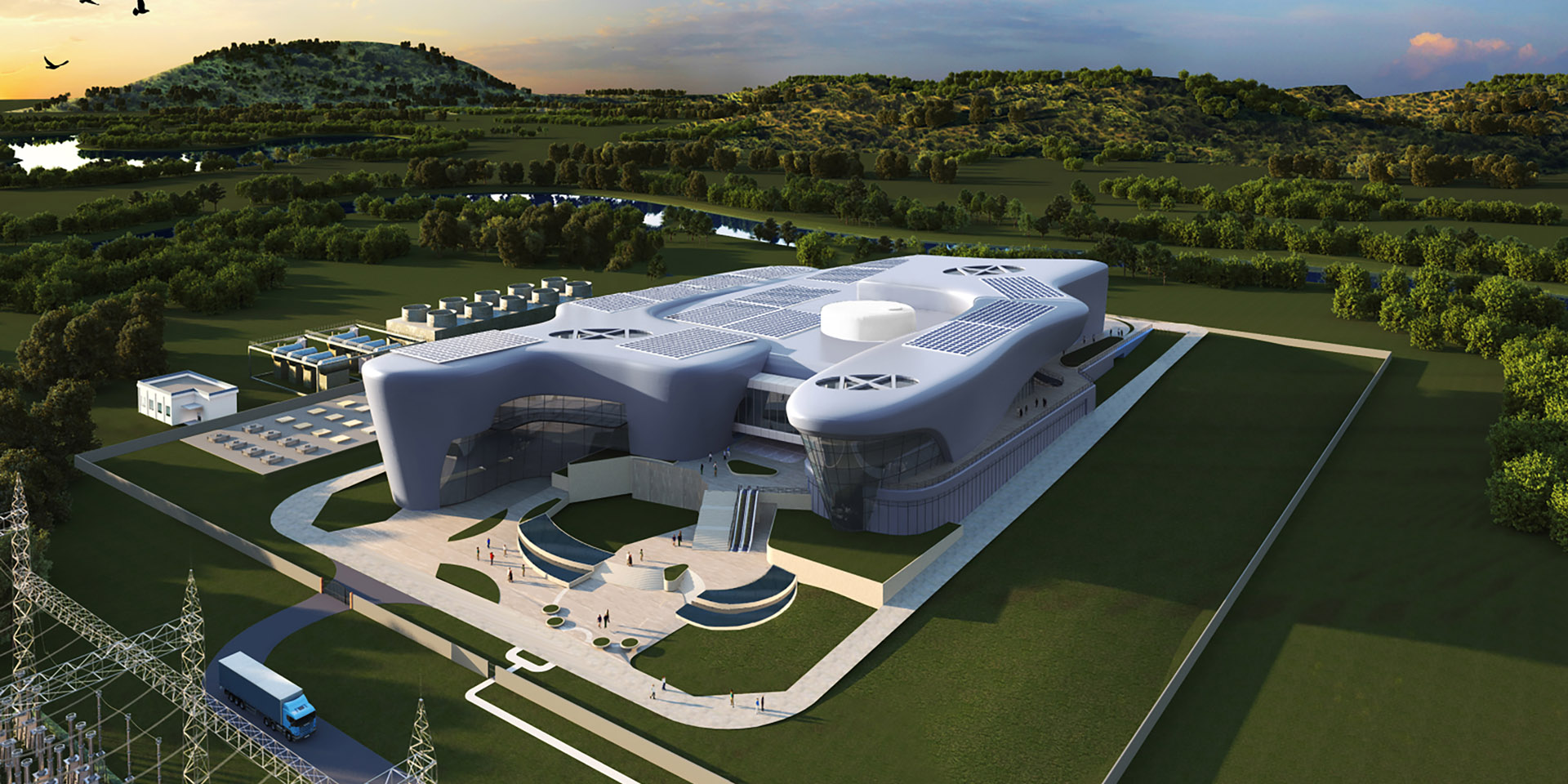Westinghouse holds Canadian supplier symposium

Westinghouse Electric Company welcomed 95 vendors to the Canadian Supplier Symposium last week to engage with current and potential suppliers for the company’s global new-build projects.

A message from Goodway Technologies
Optimizing Maintenance Strategies in Power Generation: Embracing Predictive and Preventive Approaches

Westinghouse Electric Company welcomed 95 vendors to the Canadian Supplier Symposium last week to engage with current and potential suppliers for the company’s global new-build projects.
.jpg)
The Emirates Nuclear Energy Corporation (ENEC) announced on June 8 that Barakah-4, the fourth and final Korean-designed APR-1400 reactor to be built at the United Arab Emirates’ Barakah nuclear power plant, has commenced the testing necessary to demonstrate its readiness for an operating license from the UAE’s Federal Authority for Nuclear Regulation.

NuScale Power and steel manufacturer Nucor have signed a memorandum of understanding to explore the deployment of NuScale’s VOYGR small modular reactor plants at Nucor’s scrap-based electric arc furnace (EAF) steel mills, the Portland, Ore.–based SMR developer announced Tuesday.

Bruce Power has awarded a 10-year, C$1.3 billion (about $970 million) fuel channel and feeder replacement (FCFR) contract to Shoreline Power Group for the remaining major component replacement (MCR) projects scheduled for Bruce Units 4, 5, 7, and 8.

The Korea Atomic Energy Research Institute (KAERI) and the government of Alberta have agreed on a comprehensive cooperation framework to explore the viability of using small modular reactors to help decarbonize the province—Canada’s biggest energy producer and its biggest polluter. The announcement comes the same week that Alberta’s United Conservative Party government released a climate plan aimed at reaching net zero by 2050.
 With the release last week of the policy paper Powering Up Britain, the U.K. government unveiled its plan to enhance the nation’s energy security and deliver on its ambitious net-zero commitments.
With the release last week of the policy paper Powering Up Britain, the U.K. government unveiled its plan to enhance the nation’s energy security and deliver on its ambitious net-zero commitments.
“This document explains how we will diversify, decarbonize, and domesticate energy production by investing in renewables and nuclear, to power Britain from Britain,” writes U.K. secretary of state for energy security and net zero Grant Shapps in the foreword. “It sets out the extraordinary opportunities opening up in technologies like carbon capture, usage, and storage; floating offshore wind manufacturing; and hydrogen, which will not only help us reach net zero but also consolidate Britain’s position as a global leader in green energy. And it details how we will use that leadership to influence energy decarbonization internationally.”
Portland, Ore.–based PacifiCorp—owner of the soon-to-be-retired Wyoming coal plant selected in 2021 as the future site of TerraPower’s Natrium reactor demonstration project—has released its 2023 Integrated Resource Plan, which recommends the addition of two more Natrium units to the company’s generation resource mix by 2033.

Canada’s Bruce Power, operator of Ontario’s eight-unit Bruce nuclear power plant, has announced the issuance of C$600 million (about $446.3 million) in green bonds in support of the company’s net-zero-by-2027 goal. (Investopedia defines green bonds as fixed-income instruments specifically earmarked to raise money for environmentally friendly projects.)

Nuclearelectrica has signed a memorandum of understanding with Emirates Nuclear Energy Corporation (ENEC) to provide both parties with an enabling framework for potential collaboration on the development and expansion of nuclear energy programs in Romania and the United Arab Emirates, as well as in Central and Eastern Europe.

While President Biden’s $6.9 trillion budget proposal for fiscal year 2024, submitted to Congress on March 9, was quickly pronounced “dead on arrival” by Sen. John Barrasso (R., Wyo.), it remains valuable as an indicator of the administration’s funding priorities for the coming year, including its nuclear energy priorities.
Which is why ANS on Wednesday hosted “An Inside Look at the FY 2024 Budget,” a members-only webinar moderated by ANS Executive Director/CEO Craig Piercy and featuring a team from the Department of Energy’s Office of Nuclear Energy, including DOE-NE head Kathryn Huff.

Hunt
In his spring 2023 budget speech to the House of Commons last Wednesday, U.K. chancellor of the exchequer Jeremy Hunt confirmed that, subject to consultation, nuclear power will be classified as environmentally sustainable in the U.K. green taxonomy, providing potential private investors in nuclear projects access to the same incentives currently enjoyed by investors in renewables. (Last year, the European Union added nuclear and natural gas to the list of green technologies covered by its taxonomy, but only on a transitional basis under what the European Commission termed “clear and strict conditions.”)
“We have increased the proportion of electricity generated from renewables from under 10 percent to nearly 40 percent,” Hunt declared. “But because the wind doesn’t always blow and the sun doesn’t always shine, we will need another critical source of cheap and reliable energy. And that is nuclear.”

Craig Piercy
piercy@ans.org
I have always enjoyed reading BP’s annual Energy Outlook. It’s usually the first major energy report of the new year, and while it is written by a fossil fuel company, it’s one with well-documented clean energy intentions. So, assuming you dial in the right “bias correction,” it’s a good hot take on macro energy trends.
The 2023 edition essentially confirms what we have all been thinking: The Russia-Ukraine war has caused “persistent effects” in the global energy landscape, which in turn have accelerated the shift to clean technologies.
Nuclear fares well. Its share of energy generation grows in all three of the report’s scenarios. In fact, only nuclear and renewables see growth as a percentage of total world primary energy between now and 2035.
.jpg)
Three up, one to go: The third of four Korean-designed APR-1400 reactors at the United Arab Emirates’ Barakah nuclear power plant has begun commercial operation, Emirates Nuclear Energy Corporation (ENEC) announced on February 24.

Wilmington, N.C.–based GE Hitachi Nuclear Energy and Canadian firms Ontario Power Generation, SNC-Lavalin, and Aecon announced this morning the signing of a contract for the deployment of a BWRX-300 small modular reactor at OPG’s Darlington nuclear site in Canada. According to the announcement, it is the first commercial contract for a grid-scale SMR in North America.
Applications for grants from Britain’s nuclear fuel fund are now being accepted, the U.K. Department for Business, Energy and Industrial Strategy (BEIS) announced Monday. The application deadline is February 20.

Small modular reactor developers Holtec International and GE Hitachi Nuclear Energy (GEH) are both looking to the United Kingdom as a prime location for deployment of their units—the SMR-160 and BWRX-300, respectively.
On December 19, Holtec Britain announced that it is poised to enter the United Kingdom’s generic design assessment (GDA) process for the SMR-160 early in 2023, enabling the start of construction of the first U.K. unit as soon as 2028. (The GDA, developed by the Office for Nuclear Regulation and the Environment Agency, gauges the safety, security, and environmental protection aspects of a nuclear plant design. Successfully completing the assessment culminates in a design acceptance confirmation from ONR and a statement of design acceptability from the Environment Agency.)

During a recent weeklong trip to Southeast Asia aimed at bolstering U.S. economic and security ties in the region, Vice President Kamala Harris announced the launch of nuclear energy partnerships with Thailand and the Philippines.
Currently, neither country enjoys the benefits of nuclear power. Both rely primarily on some mix of petroleum, natural gas, and coal for their energy needs.

Hunt
U.K. chancellor of the exchequer Jeremy Hunt last week assuaged any concerns that Britain’s nuclear energy advocates might have been harboring regarding the new government’s support for the proposed Sizewell C plant. (The United Kingdom is on its third prime minister since July, when Boris Johnson’s government granted EDF Energy its long-awaited development consent order for the new nuclear build project.)
What he said: In his November 17 Autumn Statement, while noting the United Kingdom’s status as “a global leader in renewable energy,” Hunt added, “We need to go further, with a major acceleration of home-grown technologies like offshore wind, carbon capture, and storage, and, above all, nuclear. This will deliver new jobs, industries, and export opportunities and secure the clean, affordable energy we need to power our future economy and reach net zero."

Canada’s Bruce Power, operator of the eight-unit Bruce nuclear plant in Kincardine, Ontario, has announced a “made-in-Ontario solution” to the net-zero challenges faced by industries: allowing new incremental nuclear output to be accredited for an avoided emissions benefit.
 Nuclear energy “has exceptional characteristics that make it uniquely qualified to address all three facets of the energy trilemma: affordability, sustainability, and reliability,” according to a new report, Solving the Energy Trilemma: The Case for Nuclear as a Sustainable Investment. Developed by the Center for ESG and Sustainability (CESG), which has a partnership with Columbia University’s International Research Institute for Climate and Society, the report concludes, “Even absent ESG [environmental, social, and governance] considerations, nuclear is an investible asset. However, its strong ESG performance makes the case for investment even stronger.”
Nuclear energy “has exceptional characteristics that make it uniquely qualified to address all three facets of the energy trilemma: affordability, sustainability, and reliability,” according to a new report, Solving the Energy Trilemma: The Case for Nuclear as a Sustainable Investment. Developed by the Center for ESG and Sustainability (CESG), which has a partnership with Columbia University’s International Research Institute for Climate and Society, the report concludes, “Even absent ESG [environmental, social, and governance] considerations, nuclear is an investible asset. However, its strong ESG performance makes the case for investment even stronger.”